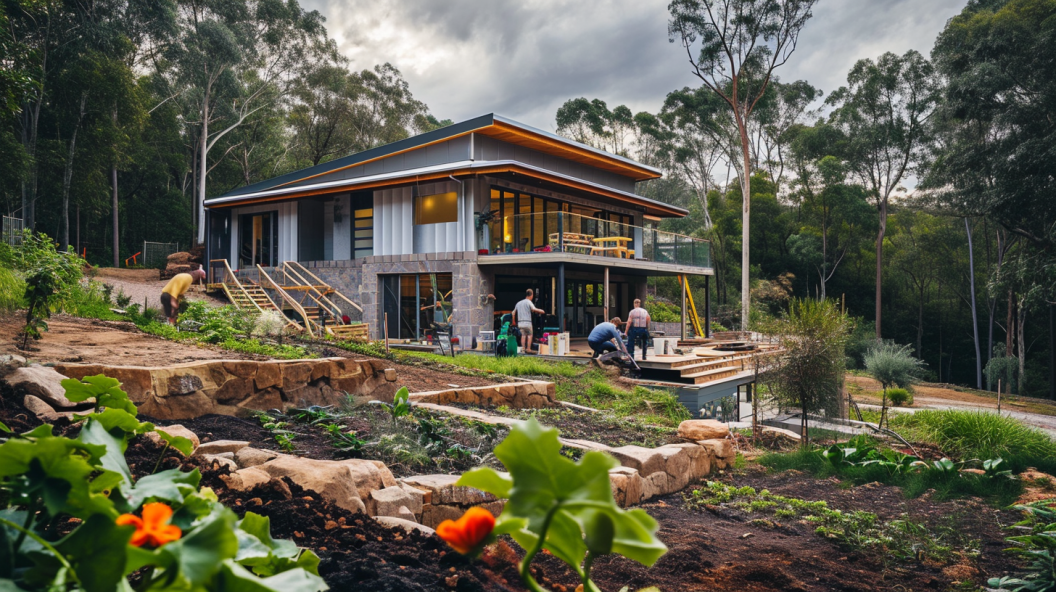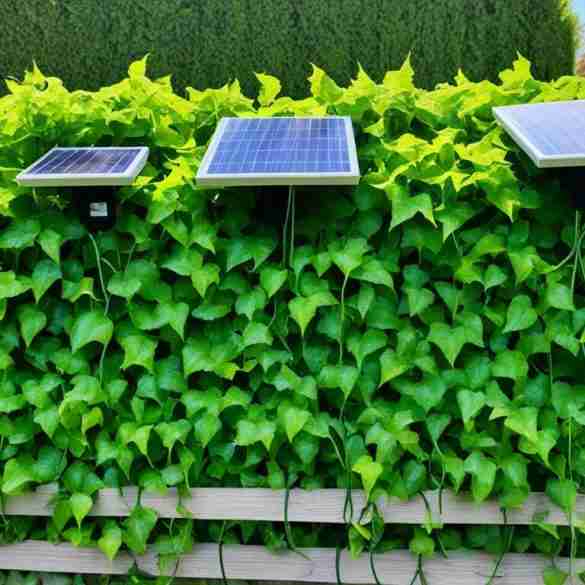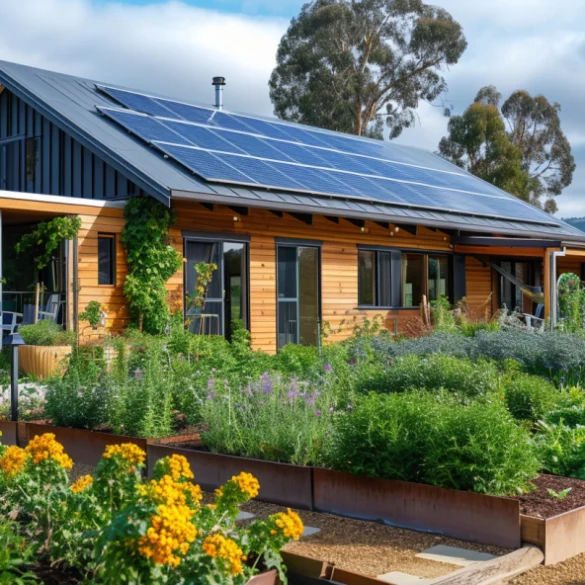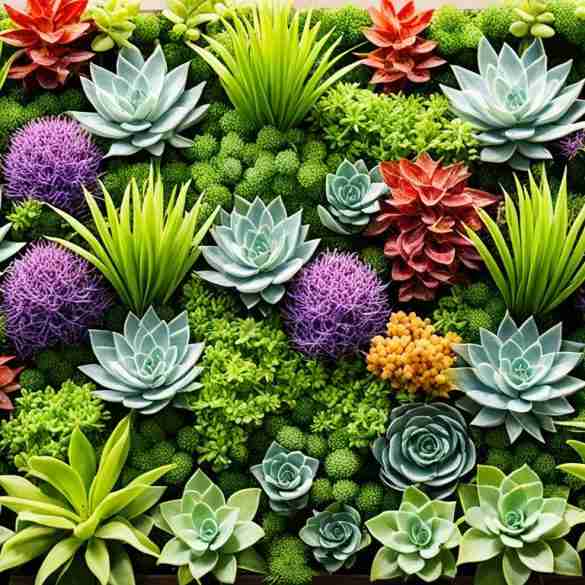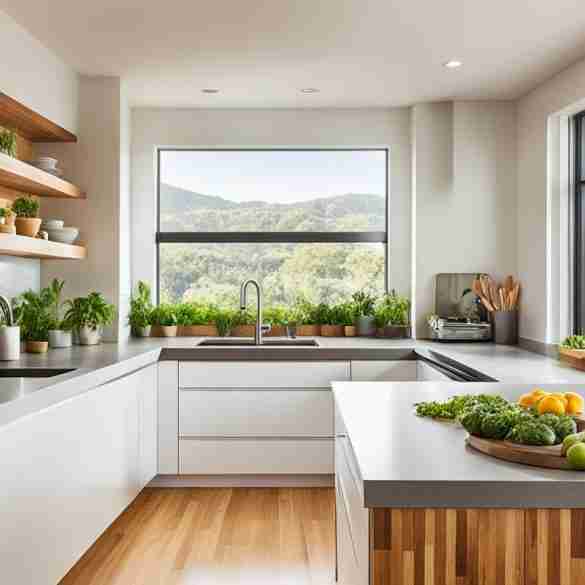Welcome to Sustainable Home Magazine! In this article, we will explore the key features of sustainable home design essentials and why they are essential in creating eco-friendly living spaces. With an increasing focus on green building practices and eco-friendly construction methods, homeowners like you are becoming more aware of the importance of sustainable design.
By incorporating these key features into your home, you can not only reduce your environmental impact but also create a healthy and comfortable living environment for you and your family. From energy efficiency to water conservation, let’s dive into the essentials of sustainable home design.
Key Takeaways of Sustainable Home Design Essentials
- By embracing sustainable home design essentials, you can minimize your environmental impact and create a healthier living space.
- Site selection, passive solar design, and strategic landscaping features are crucial elements in sustainable home design.
- High-efficiency systems and fixtures ensure energy savings and contribute to indoor air quality.
- Choosing sustainable materials and adopting zero-waste design principles are important for reducing the carbon footprint.
- On-site renewable energy generation and water conservation systems further enhance the sustainability of your home.
Site Selection for Sustainable Home Design Essentials
The first step in creating a sustainable home is selecting the right site. Choosing a location that maximizes natural resources and minimizes environmental impact is crucial. Factors to consider include access to public transportation, proximity to amenities, and the orientation of the site for optimal solar energy use. Additionally, incorporating sustainable landscaping practices can further enhance the eco-friendliness of the home.
Passive Solar Design
Passive solar design is an important element of sustainable home design. By strategically positioning windows and incorporating thermal mass, passive solar design maximizes natural light and heat from the sun, reducing the need for artificial lighting and heating. This not only reduces energy consumption but also creates a more comfortable living space.
Strategic Landscaping Features for Sustainable Home Design Essentials
Landscaping plays a significant role in sustainable home design. Incorporating features such as green roofs, rainwater harvesting systems, and native plants can enhance energy efficiency, reduce water consumption, and promote biodiversity. Additionally, sustainable landscaping practices can help mitigate stormwater runoff and improve the overall aesthetics of the home.
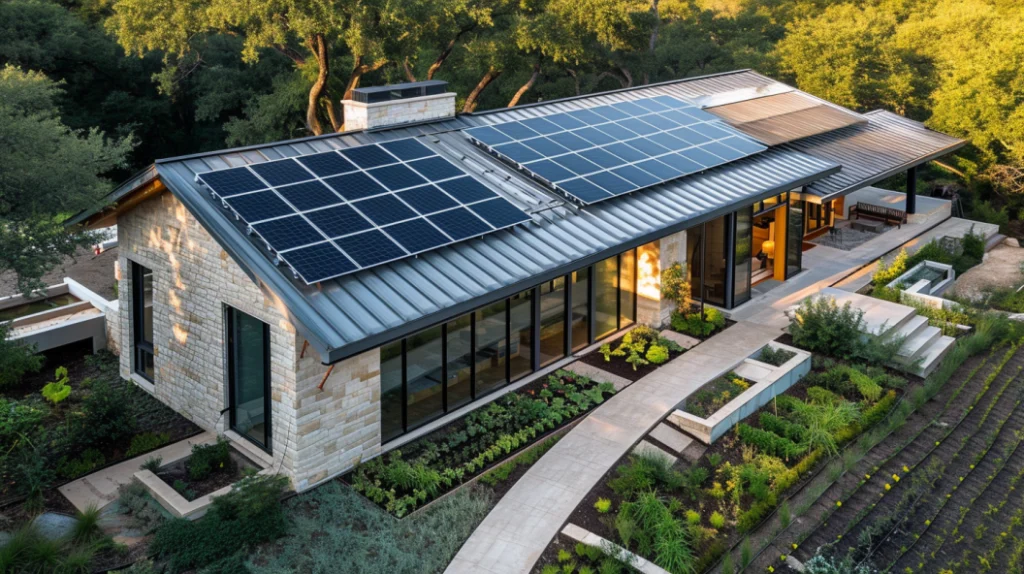
High-Efficiency Systems and Fixtures
Utilizing high-efficiency systems and fixtures is crucial for reducing energy consumption and water usage in a sustainable home. By incorporating energy-efficient appliances and employing efficient insulation and ventilation systems, homeowners can significantly lower their environmental impact while enjoying the benefits of reduced utility bills. When selecting appliances, look for the ENERGY STAR rating, which indicates that the appliance meets strict energy efficiency guidelines set by the Environmental Protection Agency.
Choosing high-efficiency systems and fixtures not only conserves resources but also promotes indoor air quality. Proper ventilation and filtration systems help remove pollutants, allergens, and excessive humidity from the indoor environment, maintaining a healthier living space. By ensuring a constant flow of fresh air, you can reduce the risk of respiratory issues and create a comfortable atmosphere for your family.
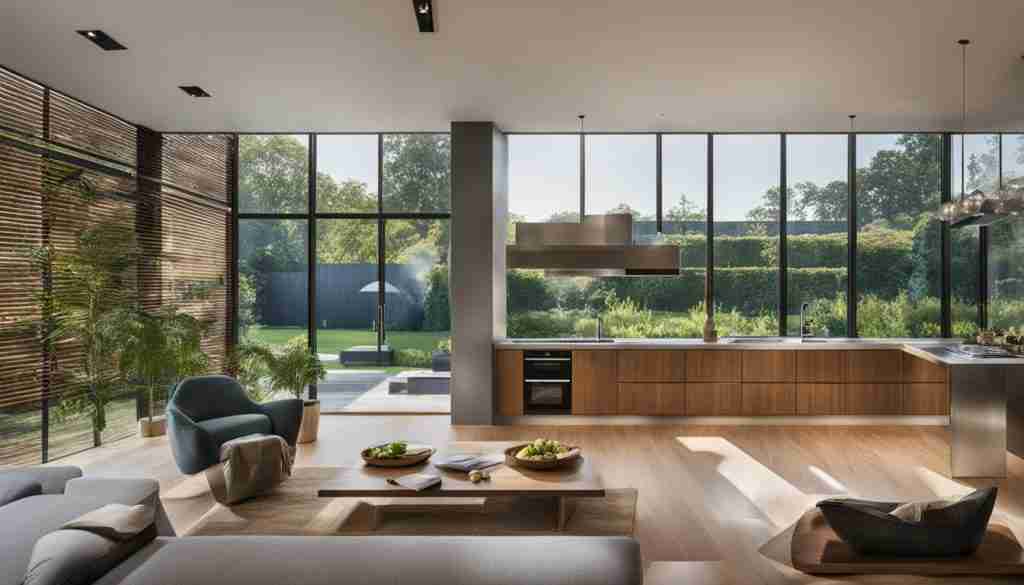
Incorporating high-efficiency systems, such as energy-efficient appliances and ventilation systems, not only reduces energy consumption but also ensures a healthy indoor environment for you and your family.
Benefits of High-Efficiency Systems and Fixtures:
- Lower energy bills
- Reduced carbon footprint
- Improved indoor air quality
- Extended lifespan of appliances
- Increased home value and market appeal
Examples of High-Efficiency Systems and Fixtures:
| System/Fixture | Benefits |
|---|---|
| ENERGY STAR-rated appliances | Significantly lower energy consumption |
| Insulation | Minimizes heat transfer, improving energy efficiency |
| Ventilation systems with energy recovery | Recovers and reuses heat energy, reducing heating costs |
| High-efficiency toilets and faucets | Reduces water usage without compromising performance |
Implementing high-efficiency systems and fixtures is an essential step towards achieving a sustainable and energy-efficient home. By choosing environmentally friendly options that promote energy conservation and indoor air quality, homeowners can contribute to a greener future while enjoying the benefits of a comfortable living environment.
Sustainable Materials for Sustainable Home Design Essentials
Choosing sustainable materials is an essential aspect of sustainable home design. Opting for materials that are responsibly sourced, have a low environmental impact, and are durable can significantly reduce the carbon footprint of the home. Incorporating recycled or salvaged materials and adopting zero-waste design principles further enhances the sustainability of the construction process.
When selecting materials for your sustainable home, look for options that prioritize eco-friendliness and long-term durability. Sustainable materials are those that have been produced using processes that minimize environmental impact and promote responsible resource management. These materials are often made from renewable resources and are designed to be recyclable or biodegradable.
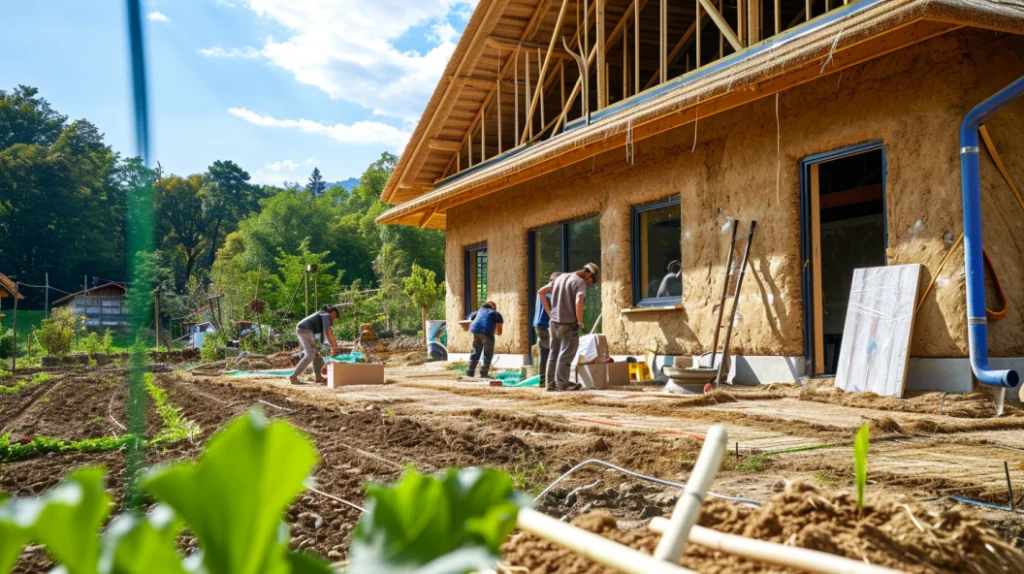
Incorporating recycled or salvaged materials is another way to reduce environmental impact and promote zero-waste design. By giving a second life to materials that would otherwise go to waste, you can minimize the need for new resource extraction and reduce landfill waste.
Choosing sustainable materials not only benefits the environment but also contributes to a healthier living space. Many traditional building materials contain harmful chemicals and pollutants that can affect indoor air quality. By opting for sustainable materials that are low in volatile organic compounds (VOCs) and other toxins, you can create a healthier home environment for you and your family.
To help you make informed decisions about the materials you choose for your sustainable home, consider the following:
- Responsibly Sourced Materials: Look for certifications such as Forest Stewardship Council (FSC) for wood products or Cradle to Cradle (C2C) for overall product sustainability.
- Low-Embodied Energy: Choose materials that require minimal energy for production and transportation, reducing their carbon footprint.
- Durable and Long-Lasting: Opt for materials that are built to last, reducing the need for frequent replacements and minimizing waste.
- Recyclability: Select materials that can be easily recycled at the end of their life cycle, contributing to a circular economy.
- Natural and Non-Toxic: Prioritize materials that are free from harmful chemicals, promoting a healthier indoor environment.
By consciously selecting sustainable materials and embracing zero-waste principles in your home design, you are not only contributing to a more environmentally friendly future but also creating a space that promotes well-being and longevity.
On-Site Renewable Energy for sustainable home design essentials
Incorporating on-site renewable energy is a crucial aspect of sustainable home design essentials. By generating clean energy directly on your property, you can reduce your dependency on fossil fuels and contribute to a more sustainable future. There are various renewable energy systems that you can install in your home, such as solar panels or wind turbines. These technologies harness the power of natural resources and convert them into electricity, providing an environmentally friendly and cost-effective energy source for your home.
When you install on-site renewable energy systems, you not only reduce your carbon footprint, but you also gain greater control over your energy consumption. By combining on-site renewable energy generation with energy-efficient practices, such as using energy-efficient appliances and implementing effective insulation, you can significantly reduce your overall energy consumption. This not only benefits the environment but also offers the potential for long-term cost savings on your energy bills.
Furthermore, on-site renewable energy systems can provide a reliable source of electricity, even during power outages. With the ability to generate your electricity, you can ensure that your essential systems and appliances continue to function, enhancing the resilience of your home.
By embracing on-site renewable energy, homeowners can play an active role in promoting sustainable practices and contributing to a greener future. Whether it’s through solar power, wind energy, or other renewable technologies, incorporating on-site renewable energy systems is a powerful step toward creating a more sustainable and energy-efficient home.
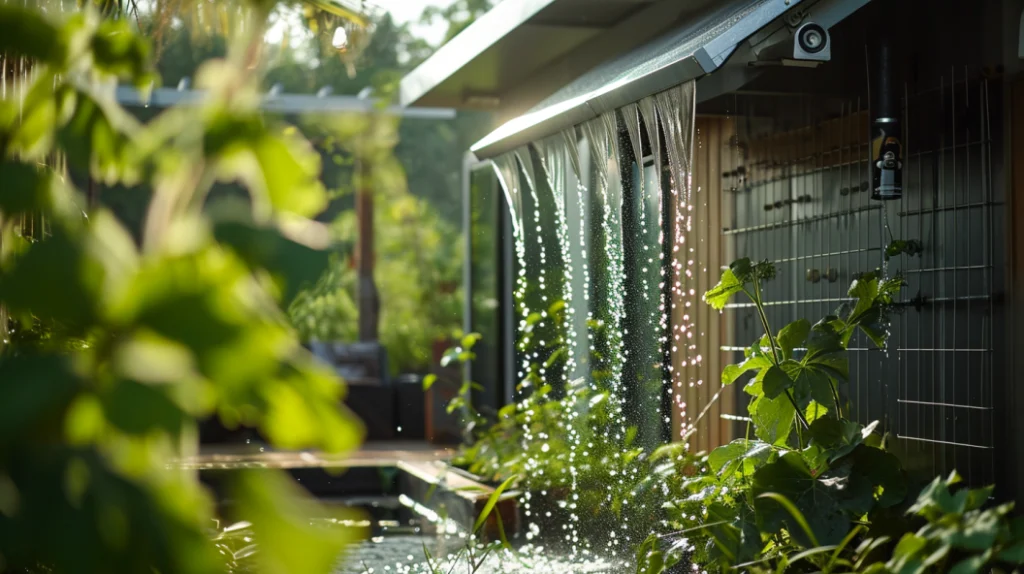
Water Conservation Systems sustainable home design essentials
Preserving and efficiently using water resources is crucial in sustainable home design. Implementing water conservation systems such as rainwater harvesting, graywater recycling, and low-flow fixtures can significantly reduce water consumption.
Rainwater harvesting involves collecting and storing rainwater for non-potable uses such as irrigation, toilet flushing, and laundry. By utilizing this alternative water source, homeowners can minimize their reliance on municipal water supplies and decrease the strain on natural water sources.
Graywater recycling is another effective water conservation technique. Graywater refers to gently used water from sinks, showers, and laundry, which can be safely recycled for irrigation purposes. By diverting graywater to the garden, homeowners can conserve fresh water and promote sustainable landscaping practices.
Furthermore, installing low-flow fixtures, such as low-flow toilets and showerheads, can significantly reduce water usage without compromising functionality. These fixtures use water-efficient technologies to maintain a consistent flow while minimizing water waste.
To enhance the sustainability of your home, adopting waste reduction strategies like composting and responsible wastewater management is essential. Composting organic waste can divert it from landfills and provide nutrient-rich soil for your garden. Additionally, responsibly managing wastewater through proper treatment and disposal practices ensures minimal impact on the environment.
By incorporating these water conservation systems and implementing efficient water usage practices, homeowners can significantly reduce their water consumption and promote a more sustainable lifestyle.
FAQ
What are the key features of sustainable home design essentials?
Key features of sustainable home design include green building practices, eco-friendly construction methods, energy-efficient materials, renewable energy systems, water conservation techniques, and efficient insulation. These elements help reduce the environmental impact of the home and create a healthy living environment.
How does passive solar design contribute to sustainable home design?
Passive solar design is an important element of sustainable home design. By strategically positioning windows and incorporating thermal mass, passive solar design maximizes natural light and heat from the sun, reducing the need for artificial lighting and heating. This not only reduces energy consumption but also creates a more comfortable living space.
What is the significance of sustainable landscaping in green home design?
Sustainable landscaping plays a significant role in green home design. By incorporating features such as green roofs, rainwater harvesting systems, and native plants, homeowners can enhance energy efficiency, reduce water consumption, and promote biodiversity. Sustainable landscaping practices also help mitigate stormwater runoff and improve the overall aesthetics of the home.
How can high-efficiency systems and fixtures contribute to a sustainable home?
High-efficiency systems and fixtures, such as energy-efficient appliances and proper insulation, are crucial for reducing energy consumption and water usage in a sustainable home. By utilizing these systems, homeowners can create a more eco-friendly living environment and improve indoor air quality through proper ventilation and filtration systems.
Why is the use of sustainable materials important in sustainable home design?
Choosing sustainable materials is essential in sustainable home design. Opting for responsibly sourced materials with a low environmental impact and incorporating recycled or salvaged materials can significantly reduce the carbon footprint of the home. Additionally, adopting zero waste design principles further enhances the sustainability of the construction process.
How can on-site renewable energy contribute to sustainable home design?
On-site renewable energy generation, such as solar panels or wind turbines, is a key feature of sustainable home design. By producing clean energy on-site, homeowners can reduce their reliance on fossil fuels and achieve significant reductions in energy consumption. Combining renewable energy generation with energy-efficient practices further enhances the sustainability of the home.
What are some water conservation systems that can be incorporated into a sustainable home?
Water conservation systems, such as rainwater harvesting, graywater recycling, and the use of low-flow fixtures, are essential in sustainable home design. These systems help preserve and efficiently use water resources, reducing overall water consumption. Additionally, adopting waste reduction strategies like composting and responsible wastewater management further enhances the sustainability of the home.

